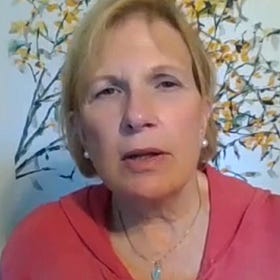Third places (tiers lieux) in France - an interview
A new book surveying "tiers lieux" invited me to explain the origins of the term
I was tempted to call this post “Karen in Paris,”1 in the hope that that will soon be true. One of the great pleasures of working on the sequel to Ray Oldenburg’s The Great Good Place has been new connections around the world. (In fact, I’ve been asked to speak in The Netherlands early next year, and maybe that’ll be a chance to go to France as well.) In conversations with French colleagues, I discovered that the term third place is widely used in France, a direct translation to tiers lieux, but it is used in a somewhat different way. Tiers lieux are promoted in government social initiatives and the term describes a range of community centers and gathering places, not simply the classic French cafes and bistros Ray wrote about.
I was delighted that the editors of a new book—launched online this week and available in print in August—wanted to interview me about my work with Ray and how we have thought about how to identify, and value, third places of many types.
The Research Notebook #1: Overview of Research on Third Places in France is published online, in French, this week and will be in print in August:
France now has more than 3,500 third places. But what do we really know about them? Over the past decade, researchers have turned their attention to this phenomenon, producing numerous analyses exploring its many dimensions.
Published by Le Bord de l'eau Editions and coordinated by the France Tiers-Lieux Observatory, this first volume of the Research Notebooks brings together around twenty contributions from researchers, practitioners, and stakeholders involved in the development of third places.
📚 This collection offers a unique overview of the current state of research on third places, combining diverse disciplines and complementary approaches.
Dive into the key questions raised by and within third places: Traditional economic models or commons-based approaches? Institutionalization or co-optation? Why are there so many third-place networks? What are their territorial impacts? Do they fight against or contribute to gentrification? Is it possible to conduct research in third places?
👉 Read and share it online now: https://www.editionsbdl.com/wp-content/uploads/2025/07/Cahiers_de_recherche_de_France_Tiers-Lieux.pdf
📖 In bookstores at the end of August from Le Bord de l'eau Editions – pre-orders already open: https://airtable.com/appd78SPtVwSVmLKS/pagNBZsEI6hkl9RPM/form
Here’s one bit from the interview about a subject that will be covered in my new book (due out in October). I’ve used Google to translate the French text.
In your opinion, what is the role of the state, and more broadly of public institutions, in relation to third places?
KC: It's very interesting to see this as an American, because Americans tend to believe that the government shouldn't be involved in these kinds of things.
In the United States, people say, "I wish we had third places," but they often point out that they're too expensive. The idea of third places is largely perceived as positive: open spaces, without barriers or mandatory membership. But today, money is a huge barrier. Even simple activities, like going out to get a coffee at a Starbucks and meeting people, have become a luxury. And this often comes up in discussions. I remember at Harvard, a graduate student said, "I don't go out anymore; it's too expensive."
So, what role should the government play in this context? Should it support and provide assistance, or even fund it? I think yes, the community as a whole would greatly benefit and thrive from the development of these types of places.
In fact, there are perfect examples in the United States, but no one talks about
them. They're called Senior Centers. They're funded by the federal government. They basically offer very low-cost meals, a lot of them, activities, and provide health services. And they are all over the country. . . . These centers are clearly active. They always say on their website, "Everyone is welcome," but no one else goes there because they are outside the town.
And we’ve uploaded the 6-page interview to our website, which means that if you open the link in your browser it will—I hope—translate the text into English.
The updated The Great Good Place will take us beyond the US and Euope, but Ray Oldenburg’s chapter on French bistros remains a pleasure to read. Here are two more references to France from Ray’s 1989 book:
In the 1970s, the economist Tibor Scitovsky2 introduced statistical data confirming what others had observed casually. The rate of pub visitation in England or cafe visitation in France is high and corresponds to an obvious fondness for sociable conversation. American tourists, Scitovsky notes, "are usually struck and often morally shocked by the much more leisurely and frivolous attitude toward life of just about all foreigners, manifest by the tremendous amount of idle talk they engage in, on promenades and park benches, in cafes, sandwich shops, lobbies, doorways, and wherever people congregate." And, in the pubs and cafes, Scitovsky goes on to report, "socializing rather than drinking is clearly most people's main occupation."
And the second:
Recently, a youthful friend of our daughter spent a summer in France. Upon her return, she struggled for words to communicate those pleasant and inspiring surroundings that greeted her in village, countryside, and city alike. “Was it as though,” we suggested, “one could set up an easel and paint a beautiful scene almost anywhere?” “Yes,” she said, “that’s it.” “Was it,” we continued, “that there were no weeds, no junkyards, no profusion of overhead wires, no litter, no gaudy billboards. . . .” “Yes,” she said, “everything was beautiful.”
Related posts
The 15-Minute City hosts the global games
Even if the political news is more exciting than it’s been in some time, the Olympics in Paris is going to be worth your attention - and not only because of the sports.
The 7 characteristics of a third place
When I was invited to talk about third places at the WRLDCTY Conference in Spain, I first said that I couldn’t travel this autumn and that I wasn’t willing to speak by Zoom, after the awful experienc…
What is The Way We Live Now trying to accomplish? Read about it here.
Even though a French friend referred to US writing on Parisian cafes as “very Emily in Paris.” I had to look up the reference—a Netflix romance-comedy series.
The Joyless Economy: The Psychology of Human Satisfaction and Consumer Dissatisfaction (1976) by Tibor Scitovsky is one of the best book I’ve come across this year—even more relevant today.










Perhaps you saw this https://www.nssmag.com/en/lifestyle/41166/third-places-youth-public-spaces-nss-edicola